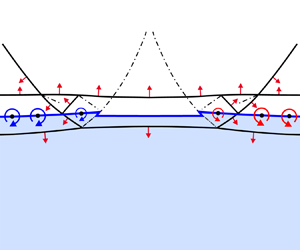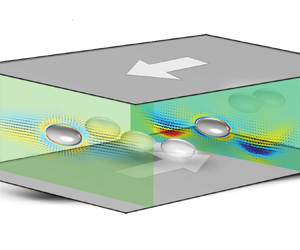Refine listing
Actions for selected content:
1417366 results in Open Access
Caitlin Vincent, Digital Scenography in the Twenty-First Century, Ashgate Interdisciplinary Studies in Opera - Caitlin Vincent, Digital Scenography in the Twenty-First Century, Ashgate Interdisciplinary Studies in Opera Abingdon: Routledge, 2022. 212 pp. ISBN 9780367553920 (hard cover). DOI: 10.4324/9781003093305 (ebook)
-
- Journal:
- Royal Musical Association Research Chronicle / Volume 54 / April 2023
- Published online by Cambridge University Press:
- 04 April 2024, pp. 134-137
-
- Article
-
- You have access
- Open access
- HTML
- Export citation
Evaluation of Commercially Available Seizure Detection Wearables in Canada: Current Evidence
-
- Journal:
- Canadian Journal of Neurological Sciences / Volume 52 / Issue 2 / March 2025
- Published online by Cambridge University Press:
- 04 April 2024, pp. 318-321
-
- Article
-
- You have access
- Open access
- HTML
- Export citation
How the Public Became the Caller: The Emergence of Reactive Policing, 1880–1970
-
- Journal:
- Law & Social Inquiry / Volume 49 / Issue 4 / November 2024
- Published online by Cambridge University Press:
- 04 April 2024, pp. 2287-2319
- Print publication:
- November 2024
-
- Article
-
- You have access
- Open access
- HTML
- Export citation
Canadian Practice and Recommendations on Functional MRI to Lateralize Language in Epilepsy
-
- Journal:
- Canadian Journal of Neurological Sciences / Volume 52 / Issue 2 / March 2025
- Published online by Cambridge University Press:
- 04 April 2024, pp. 233-240
-
- Article
-
- You have access
- Open access
- HTML
- Export citation
Robust evidence for the simple view of second language reading: Secondary meta-analysis of Jeon and Yamashita (2022)
-
- Journal:
- Studies in Second Language Acquisition / Volume 46 / Issue 5 / December 2024
- Published online by Cambridge University Press:
- 04 April 2024, pp. 1355-1372
- Print publication:
- December 2024
-
- Article
-
- You have access
- Open access
- HTML
- Export citation
Refraction of a triple-shock configuration at planar fast–slow gas interfaces
-
- Journal:
- Journal of Fluid Mechanics / Volume 984 / 10 April 2024
- Published online by Cambridge University Press:
- 04 April 2024, A49
-
- Article
- Export citation
Law’s Logistical Media: The Installation of the File System in the Postwar Japanese Prosecutor’s Office
-
- Journal:
- Comparative Studies in Society and History / Volume 66 / Issue 3 / July 2024
- Published online by Cambridge University Press:
- 04 April 2024, pp. 612-642
-
- Article
- Export citation
Tailbeat perturbations improve swimming efficiency in self-propelled flapping foils
-
- Journal:
- Journal of Fluid Mechanics / Volume 984 / 10 April 2024
- Published online by Cambridge University Press:
- 04 April 2024, A46
-
- Article
-
- You have access
- Open access
- HTML
- Export citation
Trauma as Cultural Capital: A Critical Feminist Theory of Trauma Discourse
-
- Article
-
- You have access
- Open access
- HTML
- Export citation
Reported Case Report of Recovery from Rabies Using Intrathecal Rabies Immune Globulin was Flawed – ADDENDUM
-
- Journal:
- Canadian Journal of Neurological Sciences / Volume 51 / Issue 6 / November 2024
- Published online by Cambridge University Press:
- 04 April 2024, p. 870
-
- Article
-
- You have access
- HTML
- Export citation
Sufism vs. Monism in ʿAzīz-i Nasafī's Works
-
- Journal:
- Iranian Studies / Volume 57 / Issue 3 / July 2024
- Published online by Cambridge University Press:
- 04 April 2024, pp. 360-376
- Print publication:
- July 2024
-
- Article
-
- You have access
- Open access
- HTML
- Export citation
Response to Critics: Kant’s Theory of Labour
-
- Journal:
- Kantian Review / Volume 29 / Issue 2 / June 2024
- Published online by Cambridge University Press:
- 04 April 2024, pp. 257-266
- Print publication:
- June 2024
-
- Article
-
- You have access
- Open access
- HTML
- Export citation
ETS volume 44 issue 5 Cover and Back matter
-
- Journal:
- Ergodic Theory and Dynamical Systems / Volume 44 / Issue 5 / May 2024
- Published online by Cambridge University Press:
- 04 April 2024, pp. b1-b2
- Print publication:
- May 2024
-
- Article
-
- You have access
- Export citation
Bifurcation of equilibrium positions for ellipsoidal particles in inertial shear flows between two walls
-
- Journal:
- Journal of Fluid Mechanics / Volume 984 / 10 April 2024
- Published online by Cambridge University Press:
- 04 April 2024, A47
-
- Article
-
- You have access
- Open access
- HTML
- Export citation
Miocene instead of Jurassic: the importance of sound fieldwork for paleontological data analysis—a reply
-
- Journal:
- Journal of Paleontology / Volume 98 / Issue 3 / May 2024
- Published online by Cambridge University Press:
- 04 April 2024, pp. 446-447
-
- Article
-
- You have access
- Open access
- HTML
- Export citation
War Remains: Ruination and Resistance in Lebanon Yasmine Khayyat (Syracuse, NY: Syracuse University Press, 2023). Pp. 312. $80.00 hardcover, $34.95 paper. ISBN: 9780815637936
-
- Journal:
- International Journal of Middle East Studies / Volume 56 / Issue 2 / May 2024
- Published online by Cambridge University Press:
- 04 April 2024, pp. 347-348
- Print publication:
- May 2024
-
- Article
- Export citation
Chinese copy raising and its implications for predication
-
- Journal:
- Journal of Linguistics / Volume 60 / Issue 3 / August 2024
- Published online by Cambridge University Press:
- 04 April 2024, pp. 683-693
- Print publication:
- August 2024
-
- Article
-
- You have access
- Open access
- HTML
- Export citation
Proops’s ‘Nugget of Gold’ in Kant’s Dialectic
-
- Journal:
- Kantian Review / Volume 29 / Issue 2 / June 2024
- Published online by Cambridge University Press:
- 04 April 2024, pp. 267-275
- Print publication:
- June 2024
-
- Article
-
- You have access
- Open access
- HTML
- Export citation
SQUEAKY CLEAN CELLULOSE: COMPARING PRETREATMENT EFFECTIVENESS ON SINGLE TREE RINGS AND WOODEN LATHS
-
- Journal:
- Radiocarbon / Volume 66 / Issue 5 / October 2024
- Published online by Cambridge University Press:
- 04 April 2024, pp. 1200-1212
- Print publication:
- October 2024
-
- Article
-
- You have access
- Open access
- HTML
- Export citation






